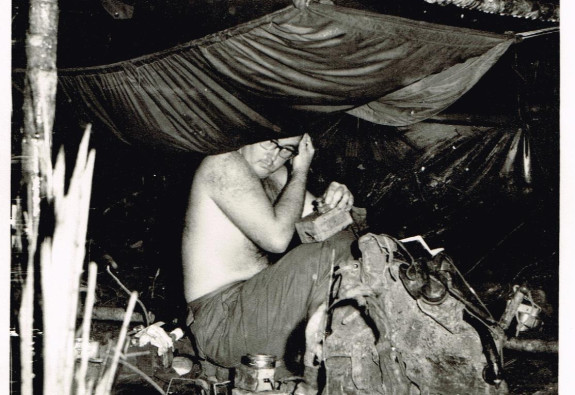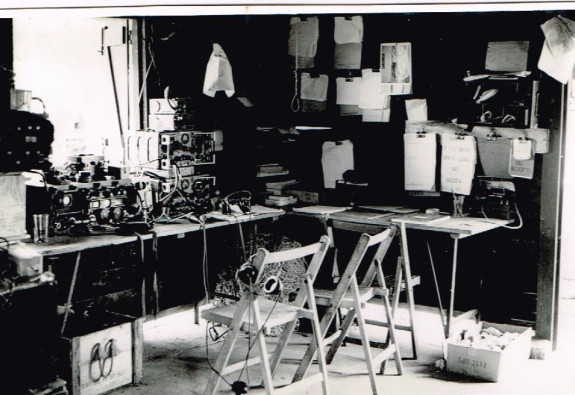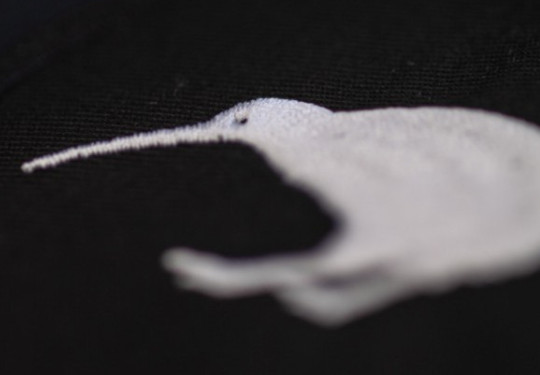Signals Corps celebrates 100 years of duty
The Royal New Zealand Corps of Signals will commemorate its centenary this month. In a series of stories, we talk to signallers past and present about their role. Malayan veteran Bill Russell takes up the story.
09 February, 2023
From the air, the jungle looked similar to the New Zealand bush. That’s where the similarity ended.
It was hot, there were thousands of insects, animals and little in the way of fresh drinkable water and what there was there had to be treated.
We arrived in Malaya to relieve 2 NZ Regiment who were based in Northern Malaya. We were all fresh and raring to go. New gear not yet broken in, fresh skin not yet acclimatised.
We joined 1 NZ Regiment (Pearce Battalion), who had just moved into a brand new camp called Terendak Camp just outside Malacca.
Training in the local jungle to get experience, bush craft courses, compass bearing marches; it was second nature later but initially it was all new.
The battalion spent three tours on the Malay Thai Border, each of approximately one month. There was no physical border, but marker pegs every kilometre or so along the notational border.
As a signaller, it was my job to get communications back to battalion HQ. Being attached to Delta Company my call sign was 4. A Coy, B Coy and C Coy call signs were 1, 2 and 3 respectively and the Colonel was call sign 9. On one patrol A company did not report in for three days and HQ was getting worried, no signal. Finally, A Company did call in with an extremely strong signal. The RSO was most impressed and asked what sort of aerial the signaller was using. A Company replied it was a folded dipole. That confused the RSO and others who knew a bit about aerial theory and the call went back to verify “folded Dipole, over”. The operator for A company came back and said “Hullo 1, I verify folded dipole, folded round every damn tree in the area – Out ! ”
It was a further three days before A company reported in again.

A signaller hard at work during his deployment in Malaya
Everyone carried seven days’ rations into the jungle, sometimes 10 days’ worth. In addition, they carried a poncho, a change of clothes plus their personal stuff. As a signaller, I carried a radio set called an A 510 which weighed about 5 kg, plus two sets of two batteries. The batteries were the size of a present-day Big Jim camping lantern. We were told to give the batteries to other platoons’ members, but strangely their packs were always full so sorry mate, can’t help!
All up it would have weighed at least 35 KG, maybe more.
Getting communications in the jungle was not easy, partly due to the terrain and also the tree canopy. The aerials used were mainly wire aerials know as dipole or end fed. As the aerials were cut to the frequency used, common length was 68 feet each side, so finding a space of 40 metres in a straight line was not easy! The aerials were erected by throwing a bobbin attached to a length of string over the most suitable branch and then pulling up the aerial after it. Throw the bobbin too hard and it would wrap itself around the branch many times rendering it useless. Many years from now, some archaeologist is going to find these bobbins hanging over the lower branches of a tree in primary jungle and wonder which civilisation did that object belong to.

An NZDF radio base in Malaya
In those days we worked frequencies around the five or six megacycles range known as High Frequency or HF. That frequency has some advantages but some severe disadvantages. It’s on the fringe of international shortwave broadcast stations and Radio Indonesia and Voice of America would constantly come in over the top of us, if our frequency drifted. After 6pm the ionosphere would come down effectively blocking all communications and distorting the signal so much as to be unreadable. Morse code (CW) was the norm later in the day especially if working over long distances, from the border back to base camp which would be anything from 100 to 300 miles. Speeds of 10 to 15 words per minute were the norm for CW, for it was the rule that the maximum speed was to be that of the slowest user. On some Royal Signals networks, I experienced 28 words per min, very fast and it was flawless.
Being the radio operator gives me a sense of pride when I look back on it, but that pride was hard to find when I was labouring up some very steep hills in Northern Malaya, or wading through swamp with seven days’ rations, one A 510 radio and four spare batteries as well as personal effects and a rifle.
Today, one can work via satellite, nobody uses CW, and batteries are very much smaller and definitely much lighter.
Sidebar:
The murder of three British plantation managers in the Malayan province of Perak in June 1948 sparked the Emergency which last until 1960.
Close Commonwealth defence arrangements were in place at the time, hence the commitment of the Zealand Armed Forces to Malaya. From 1951 until 1956 New Zealand officers and NCOs had a key role in the great track record established by the 1st Battalion, Fiji Infantry Regiment. The Navy also played its part with HMNZS Pukaki bombarding suspected Communist positions in 1954.
In 1955 the British Commonwealth Far East Strategic Reserve was established. New Zealand along with Australia and United Kingdom contributed forces to the Reserve, which had as its primary function preparing to defend Malaya against invasion by Chinese forces. The Reserve’s forces had a secondary role of assisting in the defeat of the Communist guerrillas in Malaya. New Zealand’s initial army contribution was a Special Air Service Squadron, which was later replaced by the 1st and then the 2nd Battalion, New Zealand Regiment. The Malayan Emergency was a difficult and drawn-out conflict that claimed the lives of more than 11,000 people. Within a few years the communist guerrillas were forced to retreat into rugged, jungle areas. The New Zealand forces excelled at penetrating these jungle enclaves and hunting down the enemy. These operations were a hard grind that involved lengthy patrols in harsh conditions. During the course of the Emergency 15 New Zealand servicemen died.
Source: Defence historian John Crawford
